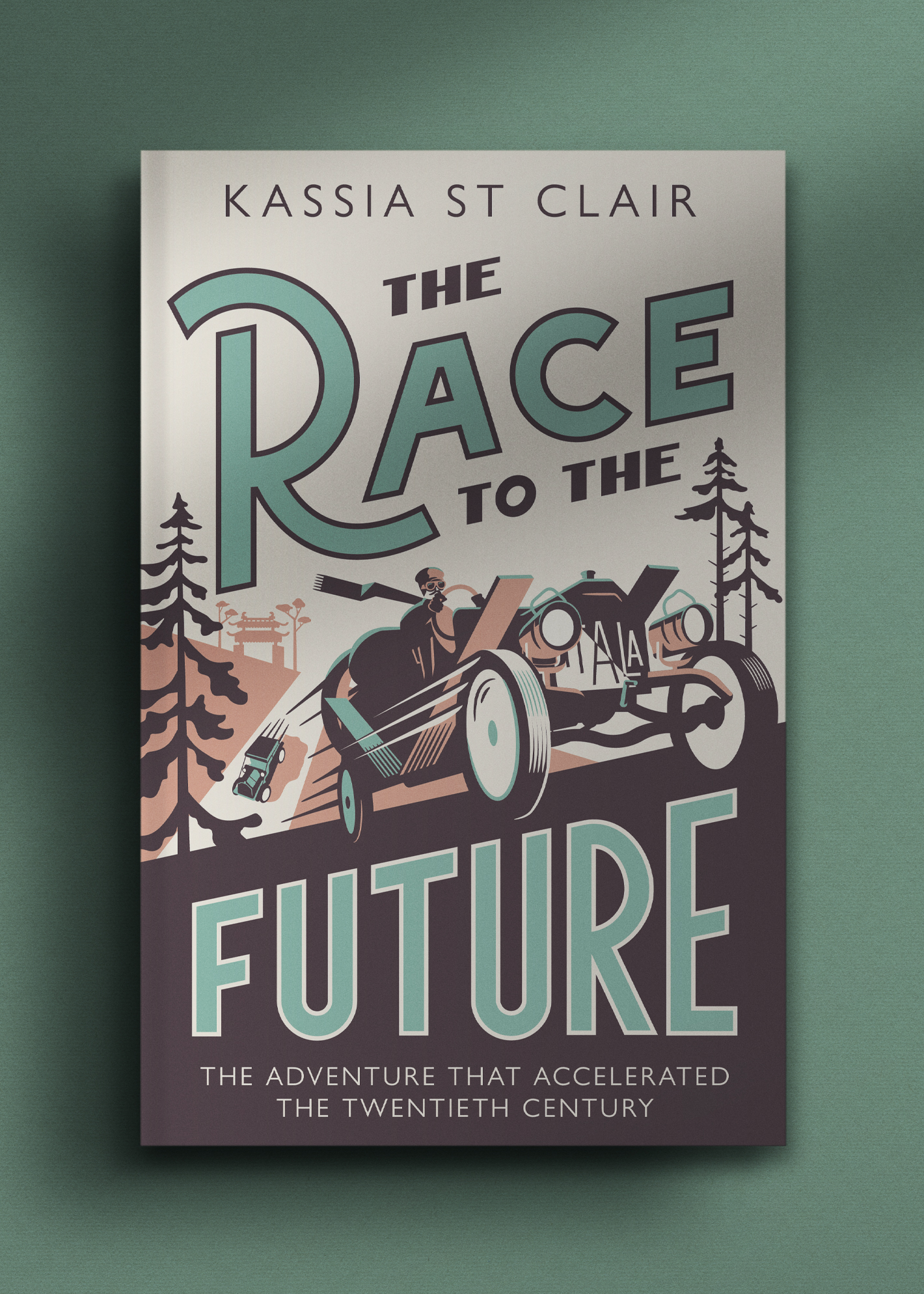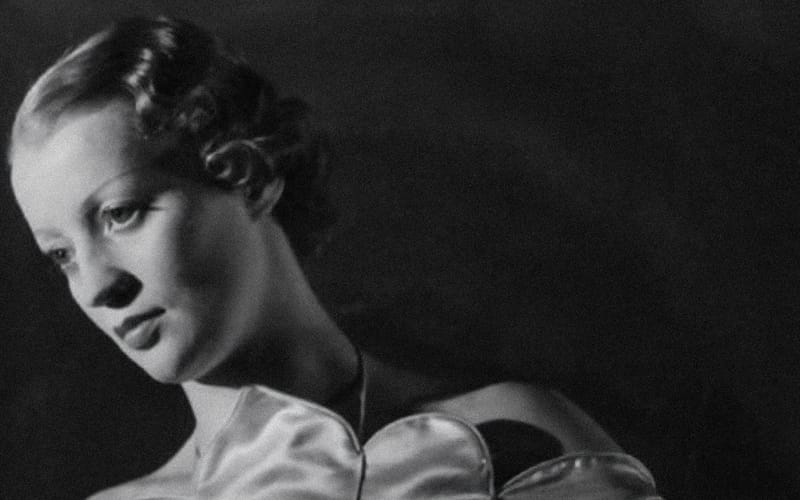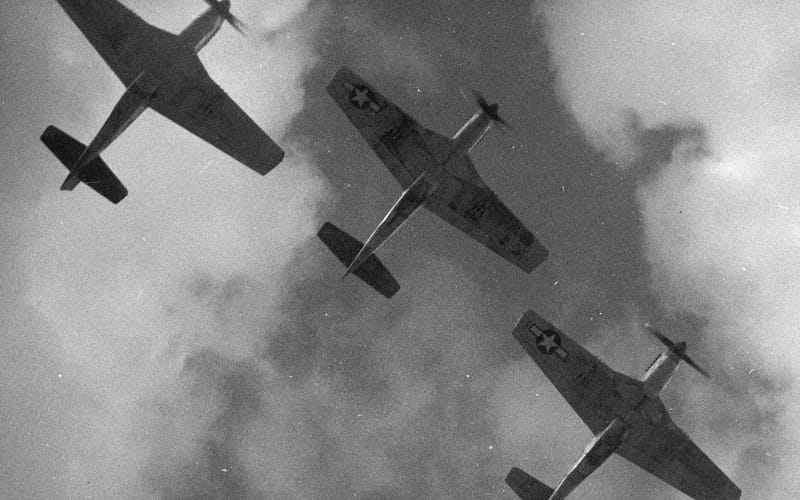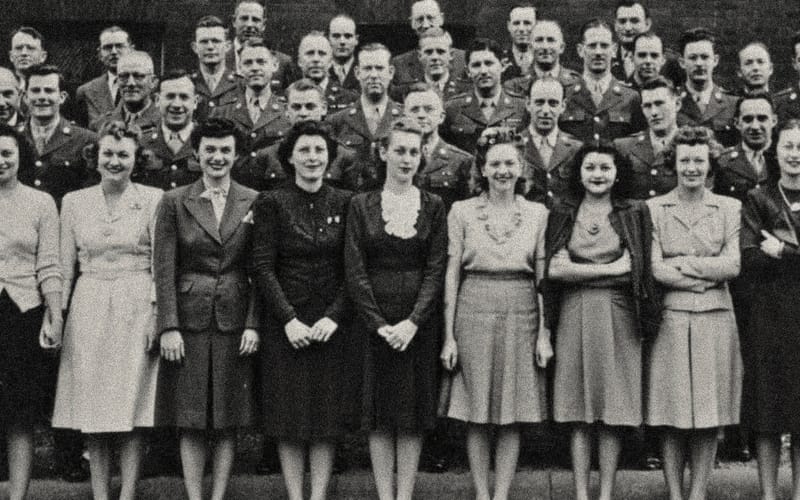Excerpt: The Race to the Future
Kassia St Clair on the adventure that accelerated the twentieth century
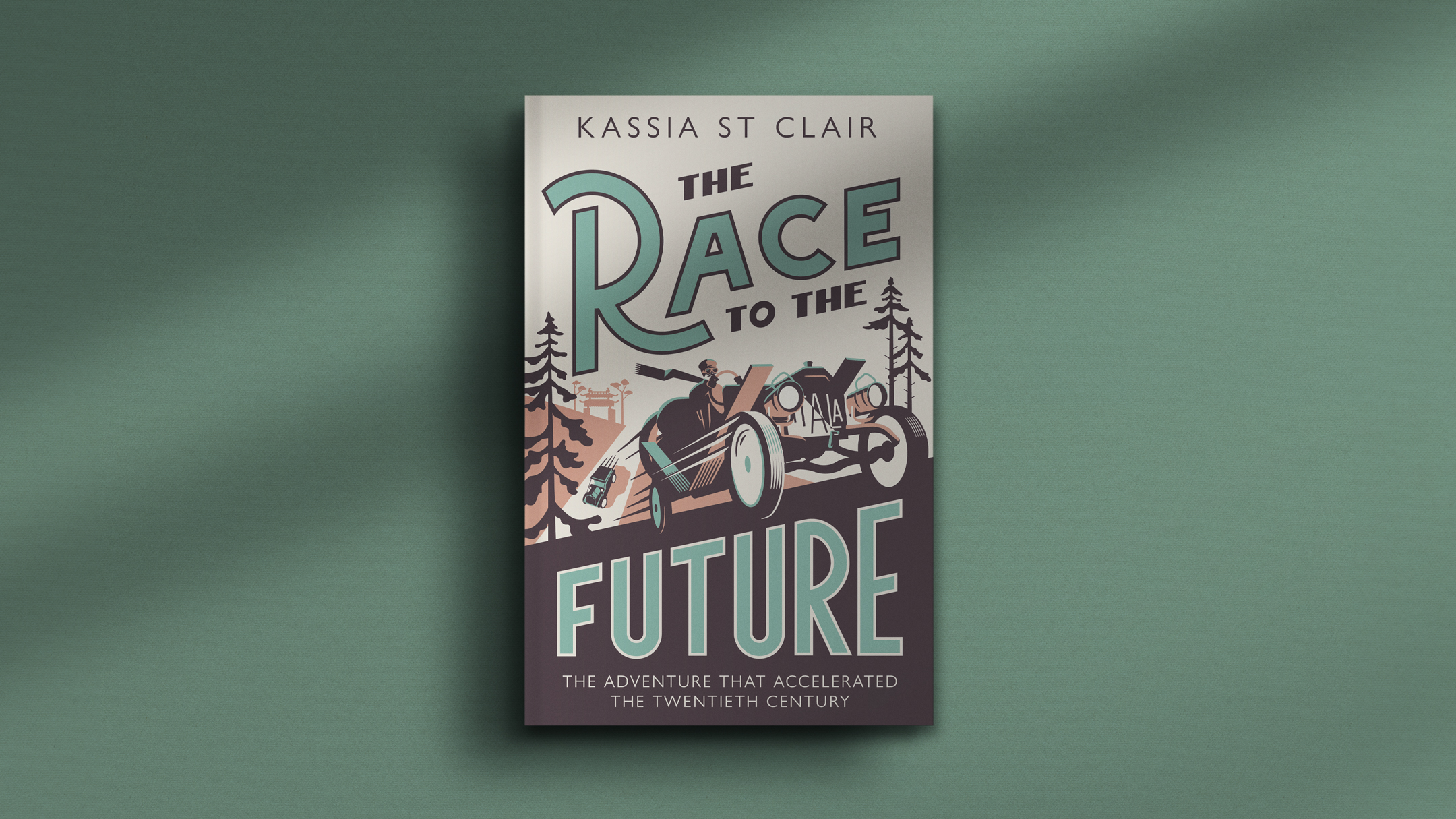
The first decade of the twentieth century was a time of ambition and expansion. It was the age of empires and the age of science. In 1907 all of these forces coalesced to create a wholly new kind of competition: the Peking to Paris race.
Five different cars entered the 'Peking to Paris'. Once underway they sought to make their way across the greatest landmass on Earth. In The Race to the Future: The Adventure That Accelerated the Twentieth Century, this week's BBC Radio 4 Book of the Week, the bestselling writer Kassia St Clair takes us back to this singular competition.
As she explains in this excerpted preface from her book, the race was more than just a race. It was a ‘decisive moment’ that confirmed the place of the automobile in modern society.

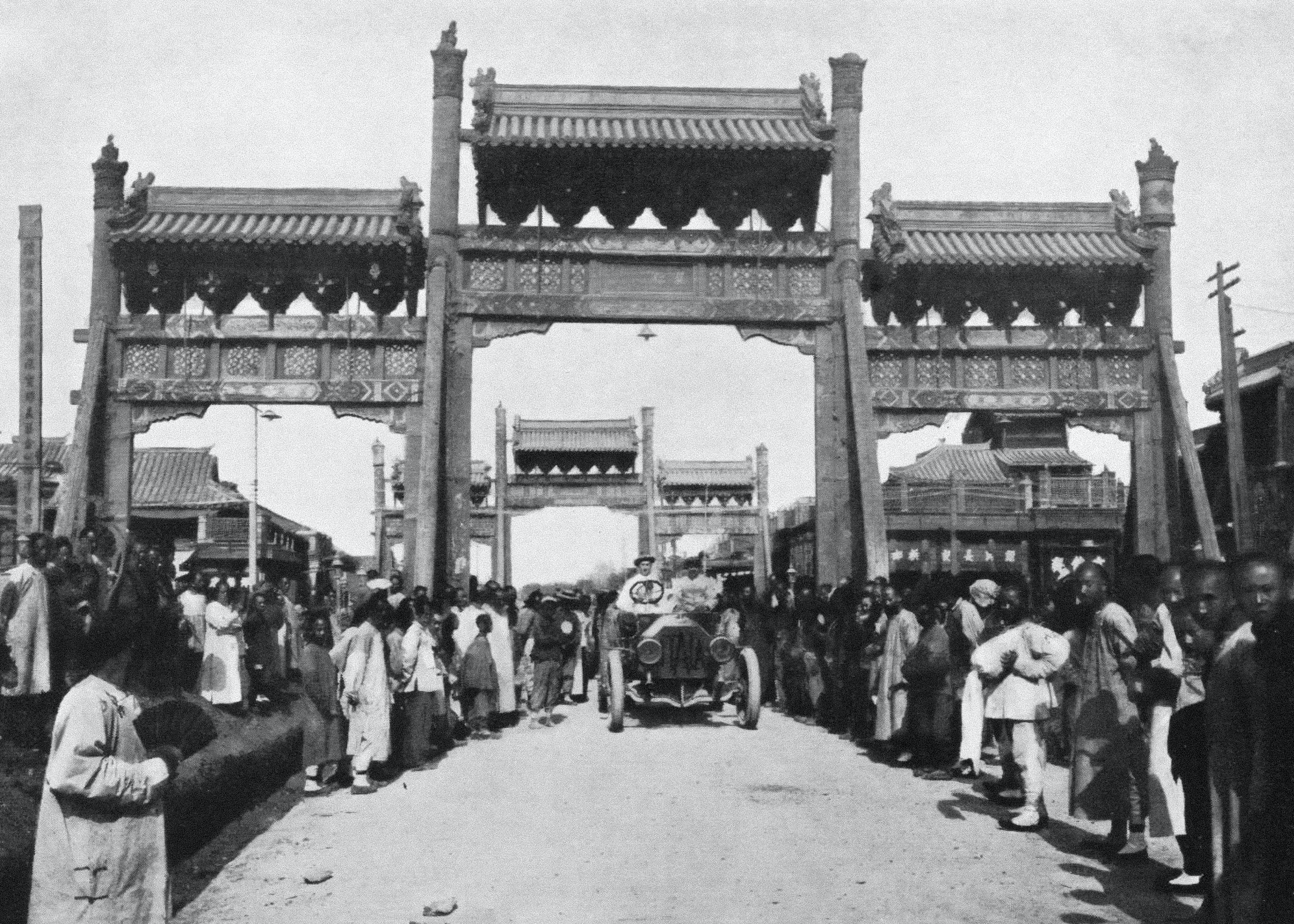

He would be a rash man who would deny that within a dozen years or so, the entire balance of the world’s population may not be shifted by means of the all-conquering motor — Comyns Beaumont, 1907
In January 1907 Le Matin, a Parisian newspaper, threw down a gauntlet to the world. What they proposed was an automobile race across two continents, a grand experiment that would push the boundaries of a fledgling technology. The trailblazing motorists would set off from Peking and drive westwards to Paris, passing through five capital cities and covering some 8,000 miles. What would unfold over the following months was both a riproaring adventure and a parable about the birth of a new world: ours.
While such a journey might be daunting even today, in 1907 the idea of driving so far and through such remote country was considered laughable. But, just as Le Matin had intended, it drew the eyes of the world. A week after the race was proposed, the Sydney Morning Herald called it ‘such a bold and gigantic scheme that it almost takes one’s breath away’ and ‘sufficient to frighten the pluckiest and most enterprising of promoters’. For the Evening Bulletin of Honolulu, it was ‘the most stupendous automobile race ever undertaken’. According to one estimate, between 500,000 and 600,000 people thronged the rain-soaked streets of Paris to see the winner enter the city. Participants – several of whom nearly died in the attempt – were compared to Heroic Age explorers like Richard Francis Burton, Roald Amundsen and Ernest Shackleton. The winner was ‘a pioneer of civilisation whose name will be quoted by future generations’.
The Peking–Paris was a decisive moment. It put the utility and practical significance of the automobile beyond doubt. Afterwards, even the most hardened sceptics could not ignore its potential as a rival to the railway or its applications in both civilian and military life. If the race was not quite the reason the automobile triumphed, it certainly smoothed its path. In practical terms, driving across two continents was the sternest test the technology had faced. Although there had been races and rallies before, they had been far shorter. One contemporary called it ‘the greatest event in the automotive world, not just for the past year, but even for the entire existence of self-moving carriages’. The endeavour was adjudged to have ‘worldwide economic and social significance’. The Sunday Times dared prophesy after the completion of the Peking–Paris that ‘the automobile may be looked upon as one of the greatest mediums of civilisation in the future, as it will penetrate into the furthest corners of the earth long before such places are reached by regular trade routes.’
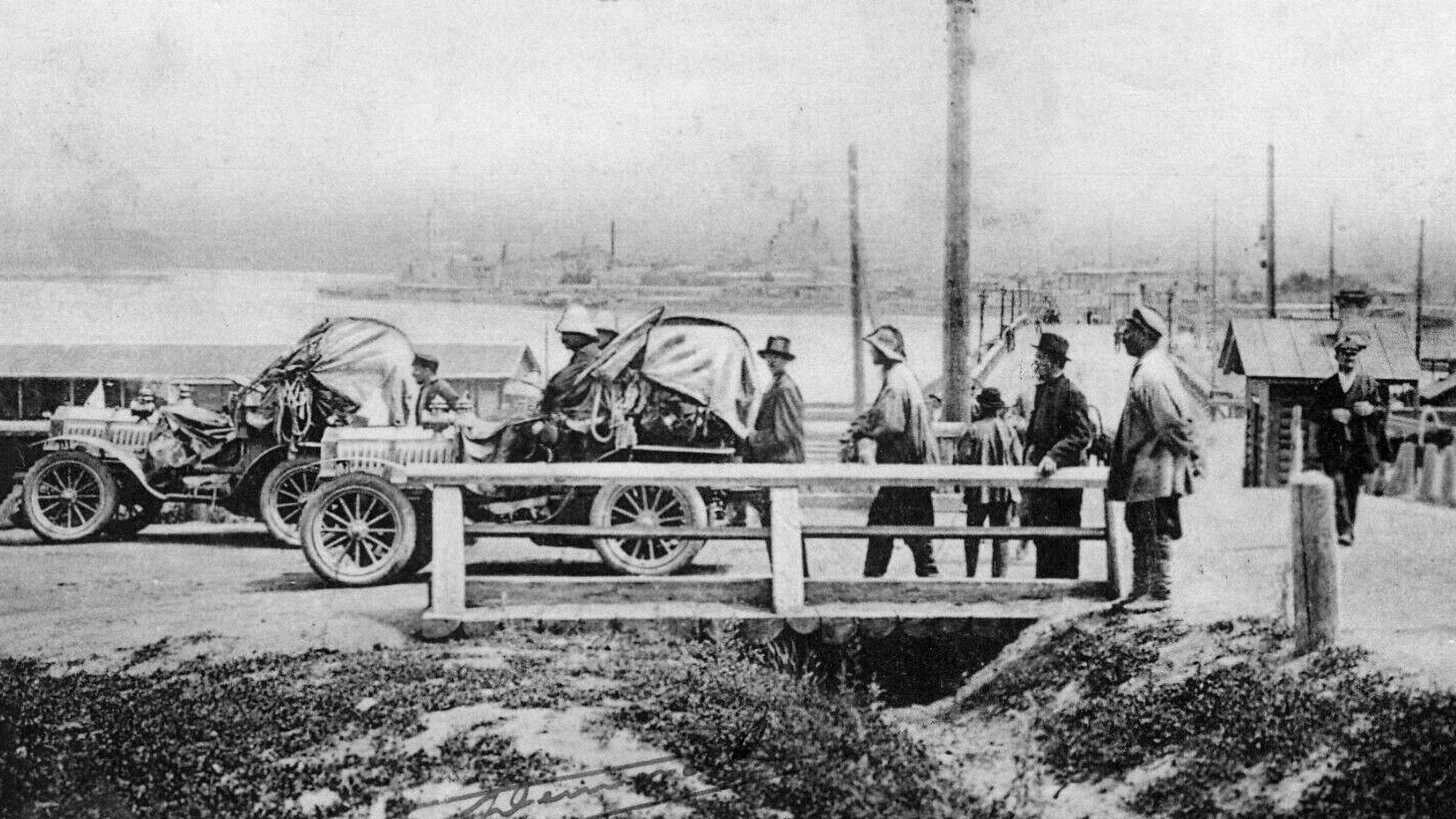
The race also had potent symbolic resonance as a harbinger of a new era of globalisation. The distance between East and West had never before seemed so small and traversable. ‘The Peking to Paris motor race may have something to do with the poetry of motion,’ argued a writer in the South China Morning Post, ‘but it helps to destroy the poetry of distance … Locomotion and communication are making the world smaller.’ Portions of the Silk Roads, which had begun to wither with the completion of the Trans-Siberian Railway, could suddenly be reimagined (as they are being once again today, thanks to China’s Belt and Road Initiative). Automobiles could be agents for progress, civilisation and peace. One journalist opined that similar rallies – ‘universal attempts to extend the civilisation of the world’ – would be their own form of diplomacy. ‘[W]ars are likely to disappear since the common interests will become so strong in the future that they will easily absorb the separate interests of the different nations.’
The Peking–Paris encapsulates the West’s ideas about herself and her role in the world a few short years before these would be overturned by the First World War and the breakdown of empires. It is emblematic of the struggles of the Old World to retain technological and industrial supremacy. And it offers a window into Russia and China at pivotal moments in their history, moments that seem increasingly relevant to their own self-image and foreign policy today.
It is difficult to comprehend the scale of the challenge the Peking– Paris competitors faced. For a start, automobiles were in their infancy. Karl Benz’s Motorwagen – usually celebrated as the very first automobile – was patented in 1886. It was a spindly contraption consisting of an engine, a seat and three wheels. It fielded around 0.6 hp[1] – like an underpowered hotel hairdryer on wheels – and managed a top speed of just under ten miles per hour. By 1907, the technology had progressed, but automobiles were still rare and considered unreliable. An article in The Economist castigated those who had ‘rushed with such luckless enthusiasm to invest in motor-bus companies’, arguing instead that ‘the horse is coming triumphantly through the ordeal’.
Although there had been races and rallies before Le Matin proposed the Peking–Paris, they had been far shorter and notoriously dangerous – usually involving fatalities. Automobiles were temperamental, prone to frequent breakdowns and punctures. (Most owners considered it essential to employ a chauffeur who could both drive and maintain the machine in working order.) Motoring manuals contained long lists of the tools, lubricants, spare tyres and parts that it was advisable to carry, even on short journeys[2]. They were also so expensive to buy, run and repair that they were out of reach of all but wealthy elites or manufacturers.
The year of the race, 1907, was one of the last when the automobile would be considered an experimental novelty rather than a practical form of transport. Radical sporting events like the Peking–Paris, which emphasised the exploratory and long-distance capabilities of the vehicle, rather than the more usual, humdrum ones, would also help nudge carmakers to go all in on combustion engines. It was also the final year when Europe – and France in particular – could claim to be the centre of the automobile industry. While their own manufacturers had been rapidly catching up, many Americans were still importing European cars. By October 1908, however, the very first Model T was completed at Henry Ford’s plant in Detroit; already the automobile was settling into a new spiritual home.
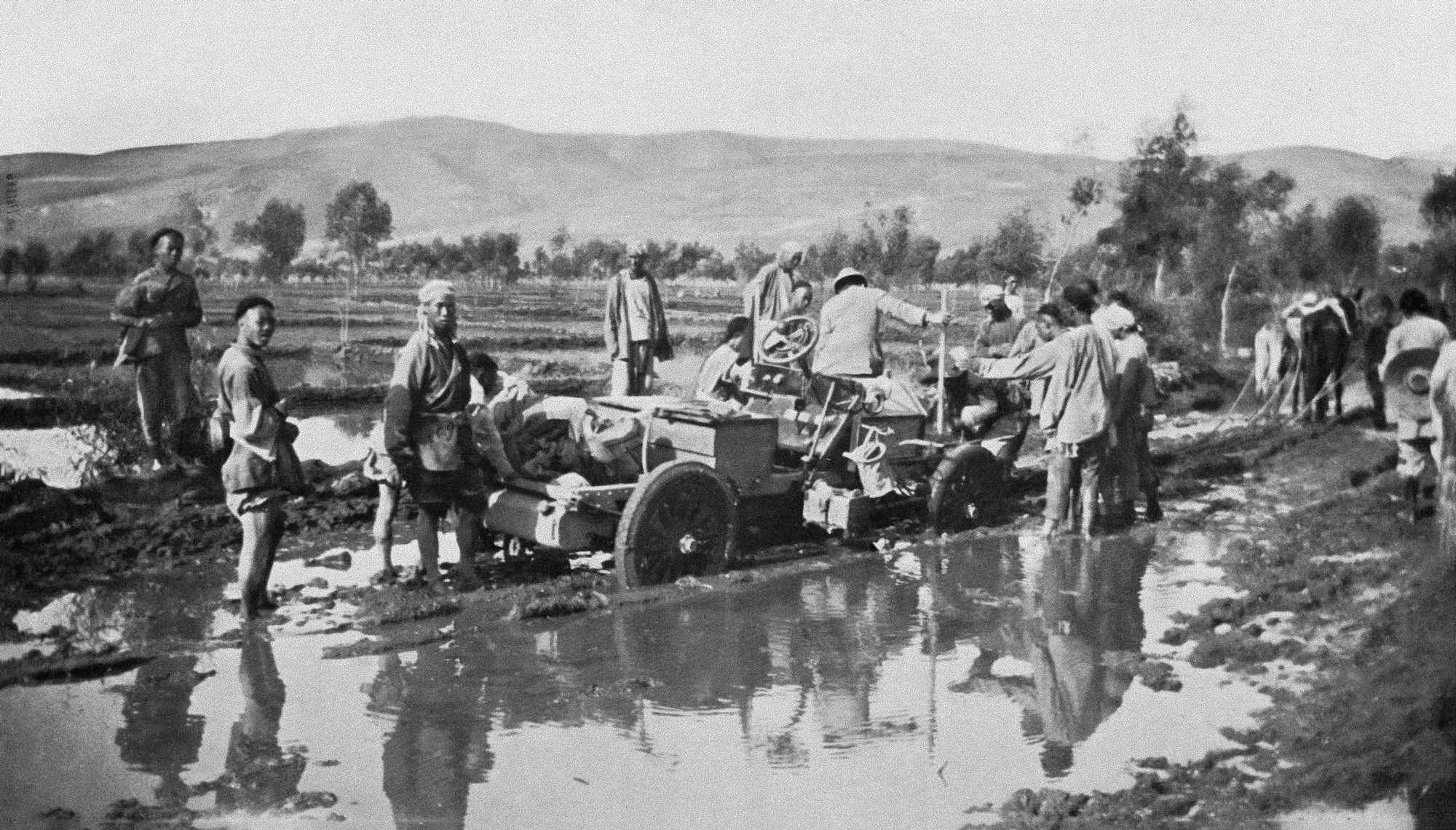
What made the Peking–Paris so compelling was that the motor car was only half the challenge. Even the most bullish enthusiasts were intimidated by the route. Throughout western Europe, roads were generally poor outside major cities; and within them, many were cobbled or covered with tram rails, which hardly made for an enjoyable ride. Elsewhere, roads often existed in name only. From Peking to Moscow, the initial four-fifths of the route, the motorists would drive on tracks formed by the passage of donkeys, horses, carts and people on foot. These would be ankle-deep in dust or knee-deep in mud, depending on the weather, and littered with trees, roots, boulders and other debris. Where there were major obstacles – for example, in the mountainous passes north of Peking – vehicles would need to be lifted bodily over obstructions. Where even this proved impossible, drivers would be forced to make their own road, using pickaxes, axes and shovels.
Most of the land through which the motorists would drive was remote and sparsely populated: accidents or miscalculations about equipment, food or fuel supplies could prove fatal. Participants would have to scale mountain ranges and cross a desert. The vehicles in the race were phaeton-style – the most common at the time – which meant that apart from flimsy canvas canopies (soon discarded to keep the weight down), they would be open to the elements. Since there were no petrol stations, fuel would need to be sent out in advance and left in strategic locations. For a portion of the route, this meant transporting fuel by camel. If motorists failed to locate a cache, or if one was pilfered before they reached it, they would be stranded.
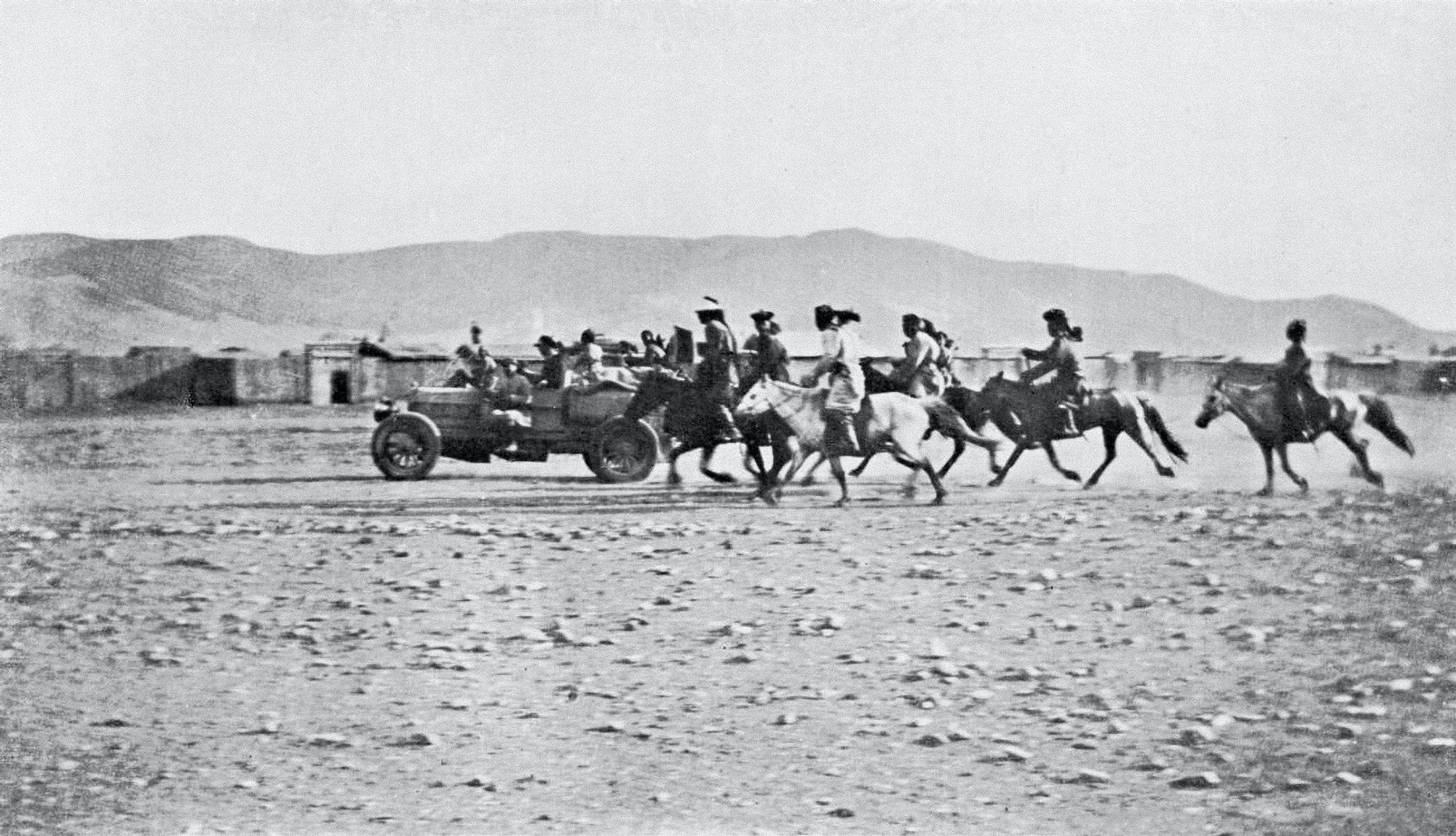
Despite the doom-mongering, participating in so historic an event proved a strong lure: the starting line would feature a compelling and varied cast of characters. Among their number were an Italian prince and his chauffeur, a former professional French racing driver and a conman, as well as journalists whose job was to write and transmit regular reports on their progress.
The Peking–Paris was a news age phenomenon, garnering headlines from Melbourne to New York, Manchester to Shanghai. Newspapers revelled in the glamour and drama of the race, spinning it as a triumph of modernity over antiquation, of speed over sloth, of Western civilisation over Eastern barbarism. There was also a sense that it was a triumph of journalism. Proposed by a canny French newspaper, the story held the news-reading world captive for months, elevating the newspapers and journalists involved as surely as it did the automobile itself. And it was the telegraph that would prove crucial to the whole endeavour. Its physical structures – offices, wires and poles – helped shape the route while also transmitting updates to readers around the globe.
Although focused on the immediate difficulties and dangers of the race, the Peking–Paris motorists were witnesses to seismic historical events. China – although vast and the source of many luxury goods coveted by other nations – was largely viewed with contempt by the West. During the previous half century she had endured a number of humiliating and expensive military defeats, leaving her with enormous debts and a tattered reputation. Relations with many Western powers were strained. A vivid image by French political cartoonist Henri Meyer in 1898 neatly sums up the state of China’s foreign relations. In it, Queen Victoria, Kaiser Wilhelm II of Germany, Tsar Nicholas II of Russia and a Japanese samurai are seated around an enormous pie labelled ‘China’ (see here). While they wield knives and squabble over who will take the best slices, a Manchu gentleman stands behind them with his hands raised in impotent horror. To make matters worse, the Qing dynasty, which had ruled China for over two hundred and sixty years, was faltering from one crisis to the next. It would fall four years after the Peking–Paris, ending more than two millennia of imperial rule, ushering in a period of turmoil and paving the way for the rise of Mao Zedong and the Communist Party of China.
The Russian Empire too was in tumult. In the late 1800s, it was the largest empire in the world, stretching from the Black Sea in the west to the Bering Straits in the east, with a population of around 135 million. Its sheer size – not to mention its geographic, cultural and linguistic diversity – made it challenging to govern. Like China, it had been ruled by the same dynasty since the seventeenth century, and the system they were using to control their territory was beginning to show signs of strain. The empire was reeling after the revolution of 1905 and a bruising defeat in the Russo-Japanese War (1904–05). Although, in theory, the unrest had been quelled and concessions made, including the formation of an elected parliament, the situation was anything but peaceful. Arson, murder and armed robbery were daily occurrences; soldiers were stationed at every bridge and patrolled city streets. Aristocratic estates were regularly overrun, pillaged and burned by the peasantry. A few days before the fi rst motorists crossed the border, Tsar Nicholas II and Prime Minister Stolypin seized back political power from the Duma in what is often called the June Coup.
Things were scarcely less troubled in the West. In terms of size and scope, this time is often seen as the high-water mark for colonial expansion. From the late nineteenth century, both older colonial powers – including France, the Netherlands and the United Kingdom – and newcomers – Japan, Italy and the United States – had scrambled to acquire influence and territory in Asia and Africa. Technological developments such as the telegraph and railways had allowed them to acquire and exert greater control over conquered land and people. However, holding on to these empires was beginning to create more and more problems. Colonial expansion and retention was costly, both financially and in terms of lives lost to uprisings and disease. Squabbles between colonial powers were also escalating as they tried to secure raw materials, trade routes and fertile land in which to grow cotton, tea, indigo and other valuable crops. The dawn of the new century would see imperial rulers engaged in tense diplomatic wrangling, crystallising the alliances and enmities that would play a pivotal role in the outbreak of the First World War seven years later.
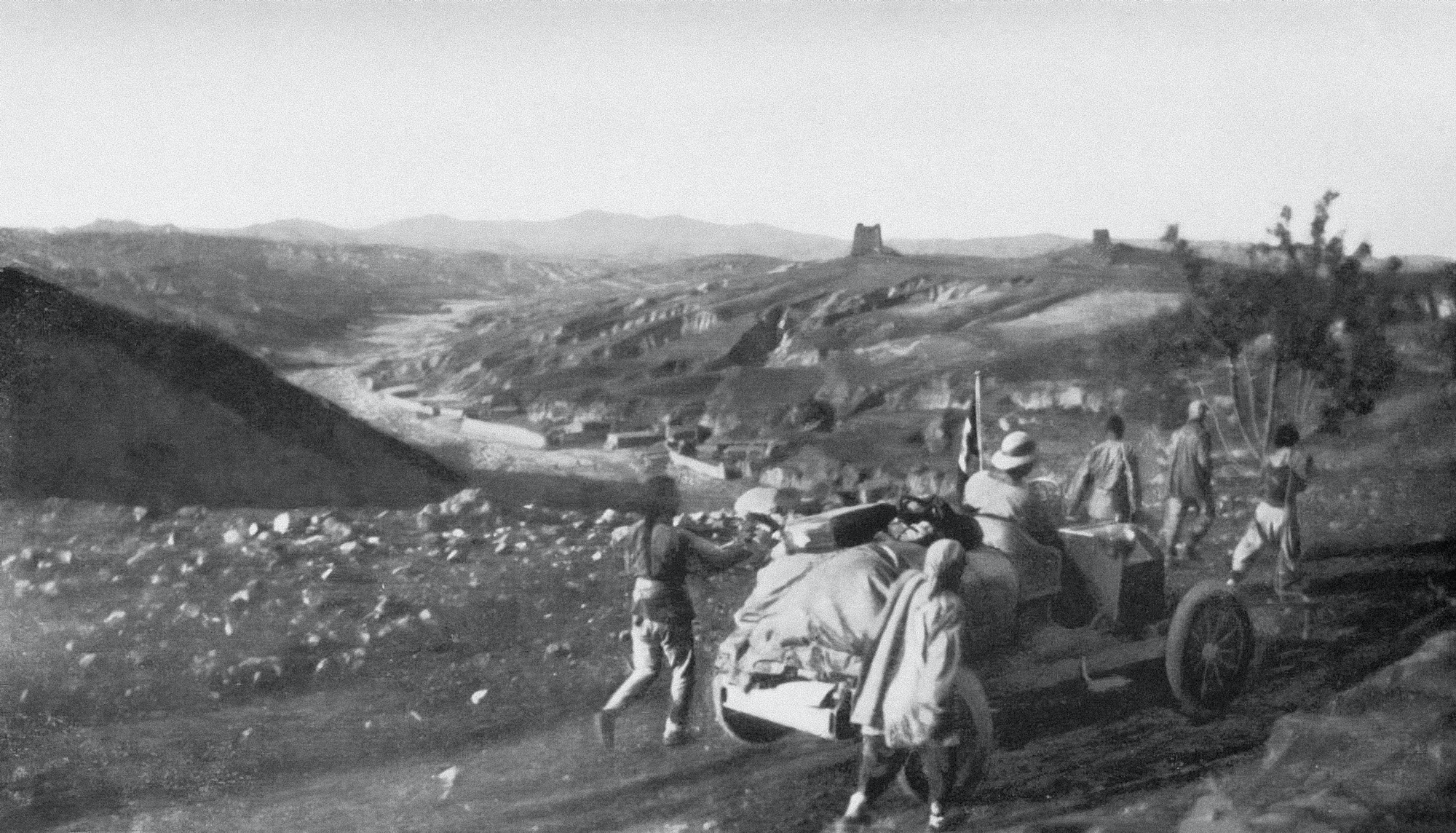
My fascination with the Peking–Paris story began with a mistake. Researching the origins of rosso corsa, Italy’s racing red, for ⇲ The Secret Lives of Colour, I came across numerous references to Prince Borghese and his pioneering run from Peking to Paris. The story went that Italy selected the colour of the prince’s car as its national racing colour in tribute to his success. Captivated, I wrote the story in my book, dutifully emailing the museum that houses the car today to confirm that the Itala, now a dull grey, had once been bright red. (Legend had it that the car had been hastily repainted to prevent rusting after being accidentally dropped off a boat.) To my horror, it would turn out to be untrue. The museum tested the paint all the way down to the metal and not a scrap of scarlet was found. Worse, I received this information after The Secret Lives of Colour had gone to press.
This was far from the first red herring I would encounter. Those participants who later published books about the Peking–Paris race had a habit of obfuscating the truth, prompted by rivalry, loyalty, censorship, the desire for a good story or patriotic fervour – one simply turned out to be an inveterate liar. A resurgence of interest in early automobiles and races during the 1950s and 1960s, particularly in Britain, produced several more books about the race. While dashing reads, these helped enfold the Peking– Paris in further layers of myth.
Researching this book has been an exercise in pruning back legends and unearthing previously overlooked primary sources. By going back to and cross-checking against contemporaneous telegrams and news reports, I hope to put a few hardy Peking–Paris fables to rest, including the one about rosso corsa that I unwittingly helped fuel.
The desire to dig deeper into the race and explore its historical context took me to a host of unlikely locations: a family home on an island in Lake Garda, archives at Hong Kong University and Queen’s University Belfast, automotive museums in Turin and at Brooklands, and an otherwise unremarkable hill in Camborne, Cornwall. I spoke to family members of the original racers, who generously shared photographs, documents and troves of family lore. I interviewed enthusiasts who have organised or participated in recent Peking–Paris rallies[3]. Some of the research and most of the writing of this book took place during the Covid-19 pandemic and the early months of Russia’s invasion of Ukraine. This made my plans to retrace the original route with my husband in a vintage Toyota Land Cruiser impossible. It is my sincerest hope that we will one day fulfil this dream, although by that time we’ll be taking our daughter with us. (She was born a week after the 116th anniversary of the start of the race.)
Doing justice to the Peking–Paris story has meant learning about the development of the automobile, which led, in turn, to finding out more about horse-powered transport, road accidents, telegraphy and the politics of oil. So that I could get a better understanding of the people and places the Peking–Paris participants encountered, I unearthed accounts by others who had travelled the same way in the years before and after 1907. Within the book, these themes and others interleave the primary narrative of the race in the form of standalone essays, which you can read in turn, skip to or read later, as you wish.
What writing this book has taught me, and what I will share with you in the following pages, is that the Peking–Paris race is a parable about a world teetering on the very edge of the most consequential century in human history. We are the inheritors of the world the Peking–Paris race helped create ■
Excerpted from Kassia St Clair's The Race to the Future: The Adventure That Accelerated the Twentieth Century

The Race to the Future: The Adventure that Accelerated the Twentieth Century
John Murray, 9 November, 2023
RRP: £20 | 384 pages | ISBN: 978-1529386059
10 June 1907, Peking. Five cars set off in a desperate race across two continents on the verge of revolution.
An Italian prince and his chauffeur, a French racing driver, a conman and various journalists battle over steep mountain ranges and across the arid vastness of the Gobi Desert. The contestants need teams of helpers to drag their primitive cars up narrow gorges, lift them over rough terrain and float them across rivers. Petrol is almost impossible to find, there are barely any roads, armed bandits and wolves lurk in the forests. Updates on their progress, sent by telegram, are eagerly devoured by millions in one of the first ever global news stories. Their destination: Paris.
More than its many adventures, the Peking-to-Paris provided the impetus for profound change. The world of 1907 is poised between the old and the new: communist regimes will replace imperial ones in China and Russia; the telegraph is transforming modern communication and the car will soon displace the horse. In this book bestselling author Kassia St Clair traces the fascinating stories of two interlocking races - setting the derring-do (and sometimes cheating) of one of the world's first car races against the backdrop of a larger geopolitical and technological rush to the future, as the rivalry grows between countries and empires, building up to the cataclysmic event that changed everything - the First World War.
The Race to the Future is the incredible true story of the quest against the odds that shaped the world we live in today.
"An incredible and stirring story" – The Spectator
"A captivating history of a seemingly impossible journey" – Miranda Seymour, Literary Review

[1] Horsepower (hp) is a unit used to measure power, specifically of engines. The base calculation uses the power of a strong dray horse turning a twelve-foot mill wheel, so one horsepower is equivalent to 33,000 foot-pounds of work per minute. It was invented by James Watt, a Scottish engineer, in the late eighteenth century. The power of the vehicles that partook in the Peking–Paris ranged from 35/45 hp to just 6 hp. By way of comparison, today’s Toyota Corolla makes do with 120 hp, the latest Ford F series starts at 290 hp and a Vespa scooter fields around 11 hp.
[2] This was a particular worry for the Peking–Paris racers, who would be physically unable to take the necessities for so long a journey with them and, for the first 5,000 miles or so, would be unable to procure them. Many Peking–Paris enthusiasts will wonder why this book uses the term ‘race’ rather than ‘rally’, which is preferred today.
[3] My reason is simple: it was predominantly referred to and experienced as a race by contemporaries – including participants.
All images are reproduced from a first edition of 'Peking-Paris im Automobil' by the Italian journalist Luigi Barzini.

Additional Credit
With thanks to Anna-Marie FitzGerald


